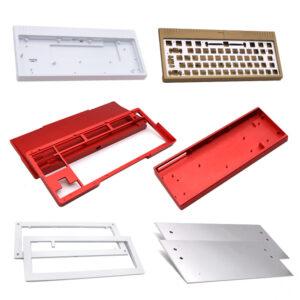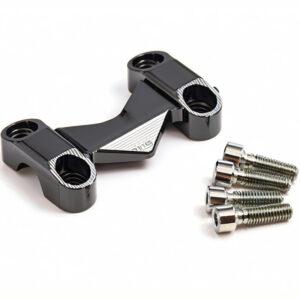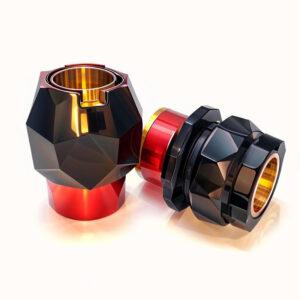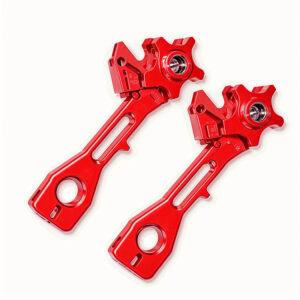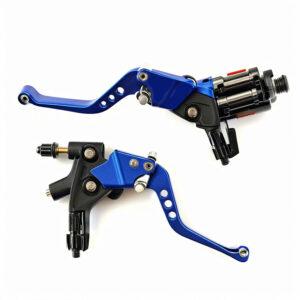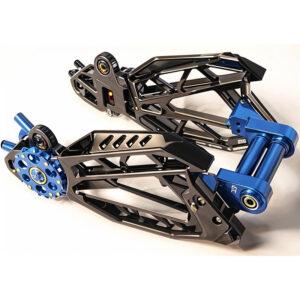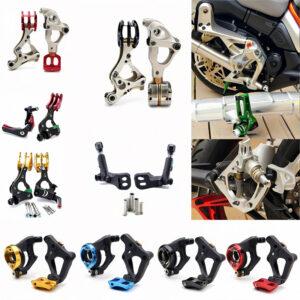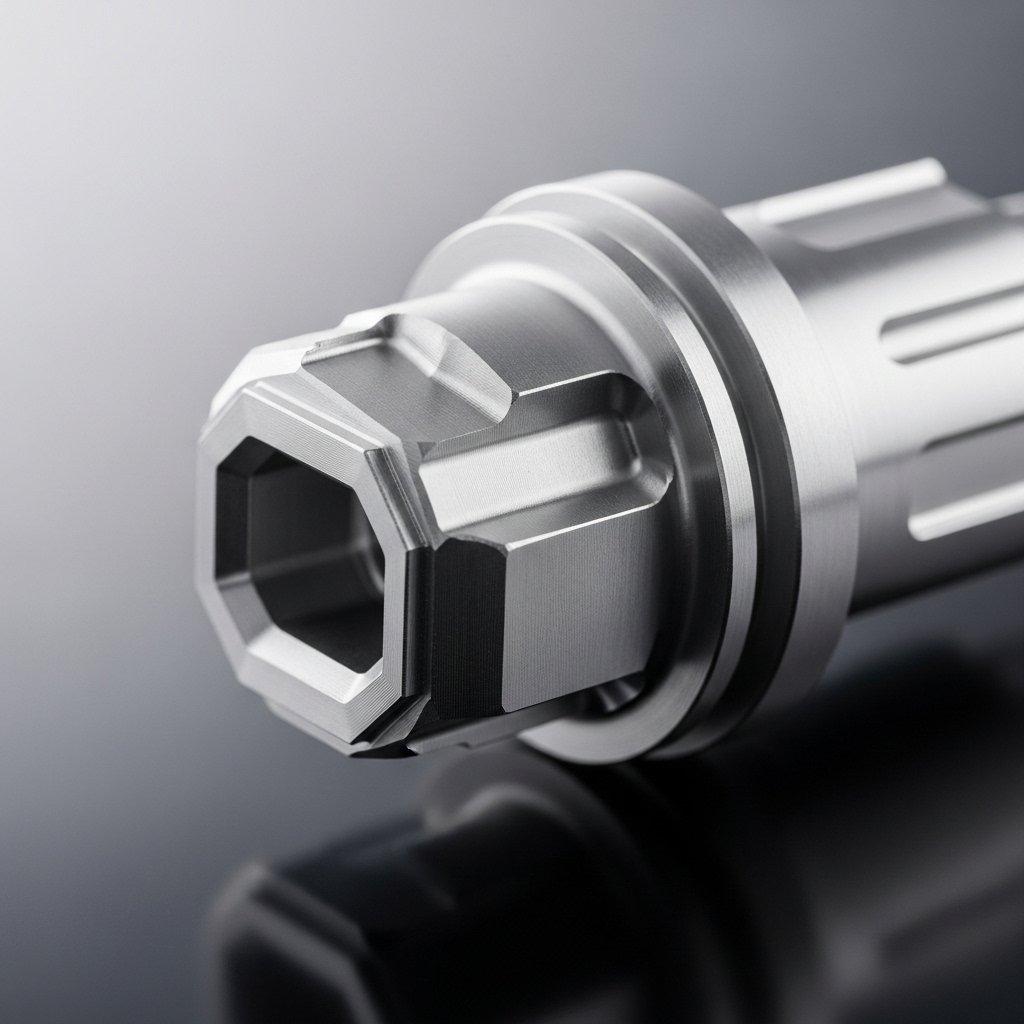Stainless steel parts CNC processing
Proficient in precision processing of various stainless steel materials, from prototype to small and medium batch production, we are your reliable one-stop manufacturing partner.

Stainless steel CNC machining
1. Professional materials, performance matching
Proficient in all series of stainless steel such as SUS303, 304, 316L, engineers provide professional material selection suggestions according to your application requirements (such as corrosion resistance, high temperature, high hardness) to ensure the performance of parts.
2. Precision machining, details guaranteed
Promise ±0.005mm tolerance and Ra0.4 roughness. Relying on constant temperature workshops, top equipment such as German DMG and Japanese Mazak and the exquisite craftsmanship of senior technicians.
3. Efficient production, stable delivery
Using MES system to drive rapid proofing and mass production, the automated production line ensures that orders have both cost advantages and delivery stability, helping you seize the market opportunity.
4. One-stop technical partner
From drawings or ideas to finished products, we provide DFM analysis, precision machining, surface treatment and three-coordinate inspection reports to provide you with a worry-free one-stop service throughout the process.
Why Choose Us
CNC parts case
DIY keyboard aluminum shell cnc machining customization
Aluminum parts CNC milling machining
Aluminum Joint CNC Turning Machining
Motorcycle bracket CNC machining customization
Motorcycle brake parts CMC machining customization
Motorcycle parts aluminum plate machining customization
Motorcycle bracket CNC machining customization
Motorcycle modification parts CNC machining customization
- 200 Series Stainless Steel
- 300 Series Stainless Steel
- 400 Series Stainless Steel
- Stainless steel turning milling
Mastering CNC Machining: A Guide to 201 & 202 Stainless Steel
Welcome to a practical guide on CNC turning and milling for 201 and 202 stainless steel. These alloys are mainstays in modern manufacturing, offering a unique blend of strength and value. Understanding their distinct characteristics is the first step toward achieving precision results.
Material Profile: 201 and 202 Stainless Steel
Both 201 and 202 are austenitic stainless steels where manganese and nitrogen are partially substituted for nickel, making them a cost-effective choice. The primary 201 stainless steel material properties for machining include high strength and good formability, balanced by a lower nickel content.
Grade 202 contains slightly more nickel and manganese, giving it a minor edge in corrosion resistance over 201. The key 202 stainless steel advantages in manufacturing lie in this enhanced durability and toughness, making it a reliable performer for a wide range of applications.
While strong and economical, a primary disadvantage is lower corrosion resistance compared to 300-series alloys. The disadvantages of machining 200 series stainless steel also include their significant work-hardening properties, which demand a specific machining approach.
You’ll find these metals in various sectors. Common applications include kitchen equipment, automotive trim, and structural components. The durability of these alloys also makes them suitable for many common uses for 202 stainless steel parts in industrial settings.
CNC Turning and Milling Strategies
A frequent question involves the machining 201 vs 202 stainless steel comparison. In practice, their machining behavior is nearly identical. Both materials exhibit high toughness and poor thermal conductivity, which can pose challenges.
The most significant issue is the rapid 201 stainless steel work hardening during milling and turning. The material hardens almost instantly upon contact with a cutting tool, which requires a confident and continuous cutting motion to prevent tool wear and failure.
For successful CNC operations, focus on rigid setups and sharp tooling. The process of choosing tooling for 202 stainless steel turning should lead you to tough, PVD-coated carbide inserts, which can withstand the high cutting forces and heat generated.
Effective CNC turning parameters for 201 stainless steel involve using lower surface speeds combined with a higher, constant feed rate. This strategy allows the tool to cut beneath the previously hardened layer. A proper coolant selection for machining 201 stainless steel is also crucial; a high-quality cutting fluid will dissipate heat and aid in chip evacuation.
The same principles apply to milling. The best milling practices for 202 stainless steel emphasize maintaining a consistent chip load and avoiding dwelling in the cut. Efficient chip removal is essential to prevent re-cutting and further work hardening. By applying these methods, you can machine both 201 and 202 stainless steel with efficiency and precision.
Precision Machining Guide: CNC Turning & Milling of 304, 316 & 321 Stainless Steels
Mastering the CNC machining of austenitic stainless steels like grades 304, 316, and 321 is a core competency in modern manufacturing. These materials are selected for their excellent corrosion resistance and mechanical properties, but each presents unique considerations for turning and milling operations.
Understanding the Alloys: 304 & 304L
Grade 304 is the workhorse of the stainless world, known for its versatility and strength. It contains roughly 18% chromium and 8% nickel, offering robust resistance to oxidation and corrosion, making it ideal for food processing equipment and architectural trim.
304L is the low-carbon variant of 304. This reduction in carbon content minimizes carbide precipitation during welding, a critical factor for maintaining corrosion resistance in welded joints. This makes 304L stainless steel welding and machining a preferred choice for fabricated tanks and vessels.
The Marine Grade: 316 & 316L
Grade 316 builds upon 304’s foundation by adding molybdenum (typically 2-3%). This addition provides vastly superior corrosion resistance, especially against chlorides and other industrial solvents. This property makes it indispensable for marine, chemical, and medical applications.
Similar to 304L, 316L is the low-carbon version of 316. It is the premier material for welded components exposed to severe corrosive environments. When considering the best stainless steel for CNC machined parts in saltwater applications, 316L is almost always the top recommendation.
High-Temperature Stability: Grade 321
Grade 321 is a stabilized austenitic stainless steel, similar in composition to 304 but with an addition of titanium. The titanium content, at least five times the carbon percentage, prevents chromium carbide formation at high temperatures, making it superb for applications involving intermittent heating up to 900°C.
Its primary advantage is high-temperature strength and resistance to intergranular corrosion after heating. This makes it a go-to material for aircraft exhaust manifolds, expansion joints, and furnace parts, where the CNC machining cost for 321 stainless steel is justified by its performance under extreme heat.
Core Principles for Stainless Steel CNC Machining
A common challenge across these grades is work hardening. These alloys harden rapidly when cut, which demands a robust machining strategy. Poor heat conductivity is another issue, concentrating heat at the cutting edge and leading to premature tool wear if not managed. This is a key focus in any guide to milling 300 series stainless steel.
Successful CNC turning stainless steel 316L requires sharp, positive rake tooling, preferably tough carbide grades with a resilient coating like TiAlN. The goal is to shear the material cleanly rather than pushing it. A rigid machine and tool setup is non-negotiable to prevent vibration and chatter.
For optimal results, use lower cutting speeds but higher, constant feed rates. This approach ensures the cutting edge is always biting into fresh material beneath the previously work-hardened layer. This is a critical aspect of the machining strategy for high-temperature stainless alloys.
Effective coolant use is paramount. A high-pressure, high-volume flow of quality coolant is essential for heat dissipation and chip evacuation. Proper coolant management in stainless steel milling prevents chip welding and extends tool life significantly.
When determining the ideal feeds and speeds for turning 304 stainless, always start with tooling supplier recommendations and adjust based on real-world results. Remember that small adjustments can make a large difference in performance and surface finish. For complex components, a detailed stainless steel CNC machining service can provide invaluable expertise. Ultimately, understanding the unique material properties of 321 SS for aerospace machining or the corrosion resistance of 316L for marine parts will dictate the success of your project.
A Practical Guide to CNC Machining: 410, 420 & 430 Stainless Steels
Shifting focus from the common 300-series, this guide explores the distinct world of 400-series stainless steels. Grades 410, 420, and 430 offer unique properties centered on hardness, wear resistance, and cost-effectiveness, presenting different challenges and opportunities for CNC turning and milling.
Grade 410: The General-Purpose Martensitic
Grade 410 is a martensitic stainless steel that can be hardened through heat treatment. Its fundamental properties include high strength and impressive wear resistance, all at a lower cost than austenitic grades. It is magnetic in all conditions.
Its primary advantage is its mechanical strength after hardening. However, its corrosion resistance is modest and not suitable for aggressive environments. This makes it a popular choice for cutlery, valve components, and turbine parts where high strength is the main requirement.
Grade 420: The High-Carbon “Cutlery” Grade
420 stainless steel is essentially a higher-carbon version of 410. This increased carbon content allows it to achieve much greater hardness and wear resistance when heat-treated, making it one of the best hardenable stainless steels for high-wear parts.
It is the go-to material for high-quality knife blades, surgical instruments, and plastic injection molds. A key consideration in the CNC machining of 420 stainless steel for molds is its abrasive nature in the annealed state and its hardness post-treatment.
Grade 430: The Versatile Ferritic
Unlike the others, Grade 430 is a non-hardenable, ferritic stainless steel. It contains high chromium content and offers good corrosion resistance to nitric acid and organic acids, along with decent heat resistance. It is also magnetic.
The primary advantages of machining 430 ferritic stainless include its excellent ductility and lower work-hardening rate compared to 300-series steels. Common uses include automotive trim, decorative applications, and appliance panels where a bright finish is desired.
CNC Machining Strategies for 400-Series Steels
These alloys are generally considered more “free-machining” than their 300-series counterparts. Their lower nickel content and ferritic or martensitic structure result in less gumminess and better chip formation, which is a significant factor in any stainless steel CNC machining cost analysis.
For turning and milling 410 stainless steel parts, a rigid machine setup is still crucial to handle the material’s hardness. Use tough, coated carbide tools designed for steels. The machinability is often compared to alloy steels, allowing for more aggressive cutting parameters than austenitic grades.
When it comes to feeds and speeds for 420 stainless steel, machinists must account for its abrasive character. Use sharp tooling and a consistent feed to prevent tool rubbing and premature wear. A high-quality coolant is essential for flushing chips and controlling temperature.
The best tooling for milling 430 stainless steel can be standard carbide grades, as this alloy is less demanding than the martensitic types. Its chips are brittle and easy to manage, but a good coolant flow helps achieve a superior surface finish. A detailed guide to CNC programming for martensitic steels will often emphasize power and rigidity.
Ultimately, while they may require heat treatment, the improved machinability of these grades makes them an efficient choice for many applications. Partnering with a precision stainless steel machining service that understands the nuances between ferritic and martensitic grades is key to unlocking their full potential. The choice between them depends entirely on the final application’s need for hardness versus corrosion resistance.
Mastering Precision: A Guide to Stainless Steel CNC Machining
Stainless steel is a cornerstone of modern manufacturing, prized for its strength, corrosion resistance, and aesthetic appeal. In the world of CNC machining, however, it is known for its demanding nature. Achieving high precision requires a deep understanding of the material’s behavior during turning and milling operations.
Understanding Stainless Steel Families
Not all stainless steel is the same. The material is broadly categorized into families—austenitic (300 series), ferritic (400 series), martensitic (also 400 series), and duplex—each with distinct properties affecting its machinability. Austenitic grades like 304 and 316 are tough and gummy, posing significant challenges.
Martensitic grades like 420 can be hardened to extreme levels, making them highly abrasive. Ferritic grades such as 430 are often more forgiving and are considered among the easiest stainless steel grades for CNC machining due to better chip control and lower work-hardening rates.
Precision and Tolerances in CNC Turning
CNC turning stainless steel requires immense rigidity. The high cutting forces can lead to tool deflection and chatter, which are enemies of precision. Achieving tight CNC turning tolerances for stainless steel parts depends on a stable machine, sharp tooling, and a controlled cutting process.
For austenitic steels, a common issue is the material pushing away from the tool, making it difficult to hold exact dimensions. Using inserts with a sharp, positive rake geometry helps slice the material cleanly, which is a key part of the best practices for high-speed stainless steel turning.
Achieving Accuracy in CNC Milling
In CNC milling, heat dissipation is a primary concern. Stainless steel’s poor thermal conductivity traps heat in the tool and workpiece, which can cause material warping and dimensional inaccuracies. This is a critical factor that can impact the stainless steel CNC machining price per hour.
A successful strategy involves using lower cutting speeds with higher chip loads. This approach transfers more heat into the chip and away from the part and tool. Effective, high-pressure coolant is non-negotiable for maintaining thermal stability and achieving a high-precision surface finish on milled stainless parts.
Material Properties and Machining Outcomes
The inherent properties of each alloy directly influence the final part. The high ductility of 304 can lead to long, stringy chips that can damage the surface finish if not managed. This is why chip control in automated stainless steel milling is a frequent topic of process optimization.
Conversely, the hardness of heat-treated 440C presents a different challenge, demanding specialized tooling and robust machinery. Understanding these nuances is what separates a standard workshop from a professional stainless steel CNC machining service.
Common Applications and Use Cases
The application often dictates the alloy and the required precision. The medical industry relies on the biocompatibility and fine finish of 316L for surgical instruments and implants, where tolerances are exceptionally tight. This is a primary market for CNC machining stainless steel for medical devices.
In aerospace, the strength-to-weight ratio and heat resistance of specific grades are paramount for critical engine components. Meanwhile, the food and beverage industry uses 304 for its cleanability and corrosion resistance, often requiring a smooth, polished finish that starts with excellent machining. Finding a reliable local stainless steel machining company is crucial for all these sectors.

